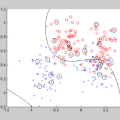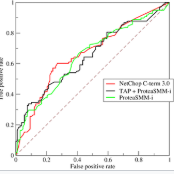Comments play an important role in updating Stack Overflow (SO) posts. They are used to point out a problem (e.g., obsolete answer and buggy code) in a SO answer or ask for more details about a proposed answer. We refer to this type of comment as update request comments (URCs), which may trigger an update to the answer post and thus improve its quality. In this study, we manually analyze a set of 384 sampled SO answer posts and their associated 1,221 comments to investigate the prevalence of URCs and how URCs are addressed. We find that around half of the analyzed comments are URCs. While 55.3% of URCs are addressed within 24 hours, 36.5% of URCs remain unaddressed after a year. Moreover, we find that the current community-vote mechanism could not differentiate URCs from non-URCs. Thus many URCs might not be aware by users who can address the issue or improve the answer quality. As a first step to enhance the awareness of URCs and support future research on URCs, we investigate the feasibility of URC detection by proposing a set of features extracted from different aspects of SO comments and using them to build supervised classifiers that can automatically identify URCs. Our experiments on 377 and 289 comments posted on answers to JavaScript and Python questions show that the proposed URC classifier can achieve an accuracy of 90% and an AUC of 0.96, on average.
翻译:评论在更新Stack Overflow(SO)帖子中发挥重要作用。它们用于指出SO答案中的问题(例如过时的答案和有错误的代码)或要求关于建议答案的更多详细信息。我们将这种类型的评论称为更新请求评论(URCs),它们可能会触发对答案帖子的更新,从而提高其质量。在本研究中,我们手动分析了384个SO答案帖子及其相关的1,221个评论,并调查了URCs的普遍性以及如何处理URCs。我们发现分析的评论中有约一半是URCs。虽然55.3%的URCs在24小时内得到解决,但36.5%的URCs在一年后仍然没有得到解决。此外,我们发现当前的社区投票机制无法区分URCs和非URCs。因此,许多URCs可能不会被能够解决问题或提高答案质量的用户所知道。作为增强URCs意识和支持未来对URCs的研究的第一步,我们研究了提取来自SO评论不同方面的一组特征的可行性,并将其用于构建监督分类器,以自动识别URCs。我们对JavaScript和Python问题的答案评论进行的实验表明,所提出的URC分类器平均可以达到90%的准确度和0.96的AUC。




